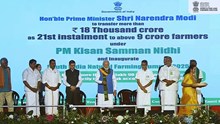
Finance Minister Nirmala Sitharaman announced significant tax relief for the middle class in the Union Budget for 2025-26. Under the new tax regime, individuals earning up to Rs 12 lakh annually will not have to pay any income tax. For salaried individuals, the exemption limit is Rs 12.75 lakh, which includes a standard deduction of Rs 75,000.
Presenting the Budget in Parliament on February 1, 2025, the Finance Minister delivered the good news to taxpayers, stating, “There will be no income tax payable up to an income of Rs 12 lakh (i.e., an average income of Rs 1 lakh per month, excluding special rate income such as capital gains) under the new regime. This limit will be Rs 12.75 lakh for salaried taxpayers due to a standard deduction of Rs 75,000.” She added that a tax rebate is also being provided alongside the slab rate reduction, ensuring no tax liability for eligible taxpayers.
Sitharaman highlighted that this move aligns with the government’s philosophy of “trust first, scrutinize later.” She assured that the tax rebate, along with a reduced slab rate structure, will put more money in the hands of the middle class, boosting household consumption, savings, and investment. "Reforms are a means to achieve good governance for the people and the economy," she said, quoting the Thirukkural, highlighting the government's focus on responsive and citizen-centric policies.
The new tax slabs ensure that taxation remains progressive while reducing the overall tax outgo for individuals across income brackets. In the new tax regime, the Finance Minister proposed to revise tax rate structure as follows:
|
Income Slab (Rs) |
Tax Rate |
|
0 – 4 lakh |
Nil (0%) |
|
4 – 8 lakh |
5% |
|
8 – 12 lakh |
10% |
|
12 – 16 lakh |
15% |
|
16 – 20 lakh |
20% |
|
20 – 24 lakh |
25% |
|
Above 24 lakh |
30% |
The Finance Minister also announced key changes to simplify TDS and TCS provisions. The government has reduced TDS rates and increased deduction thresholds. For senior citizens, the tax-free interest income limit has doubled from Rs 50,000 to Rs 1 lakh. The TDS threshold on rent payments has been raised from Rs 2.40 lakh to Rs 6 lakh annually. The TCS threshold on foreign remittances under the RBI’s LRS has increased from Rs 7 lakh to Rs 10 lakh. Additionally, delays in TCS payments will no longer be treated as criminal offenses if settled on time.
Minister highlighted that the new Income Tax Bill will use clear and simple language to make the tax system more taxpayer-friendly. This move aims to ensure tax certainty and reduce litigation, a long-standing issue in India’s tax administration. The overhaul is expected to provide relief to millions of taxpayers while boosting economic growth through higher consumption and savings.
Sitharaman described taxation reforms as a key pillar in achieving the vision of Viksit Bharat, ensuring simplicity, transparency, and reduced litigation in the new income tax framework. The changes are expected to increase disposable income, drive consumer spending, and encourage investments, strengthening economic growth.
















